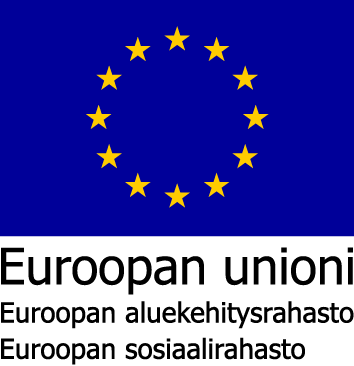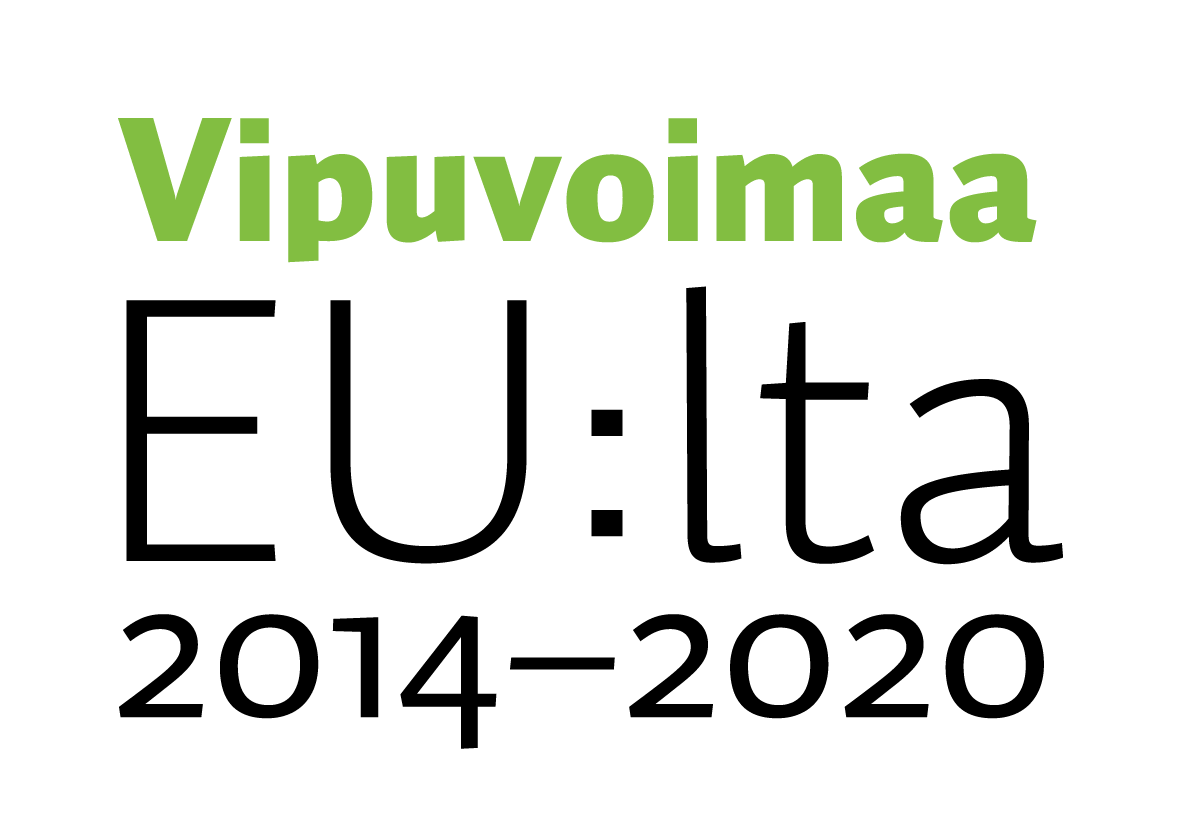

 |
 |
Hankekoodi: S21369
Hankkeen nimi: Hyvä, parempi, tuottava! Työhyvinvoinnin ja kehittyvän työyhteisön voimin parempaan tuottavuuteen
Toimintalinja: 3. Työllisyys ja työvoiman liikkuvuus
Erityistavoite: 7.1. Tuottavuuden ja työhyvinvoinnin parantaminen
Suunnitelman mukainen toteutusaika: Alkaa 1.10.2018 ja päättyy 31.3.2021
Toiminnan tila: Toiminta päättynyt
Vastuuviranomainen: Keski-Suomen elinkeino-, liikenne- ja ympäristökeskus
Hakijan virallinen nimi: Turun ammattikorkeakoulu Oy
Organisaatiotyyppi: Ammattikorkeakoulu
Y-tunnus: 2528160-3
Jakeluosoite: Joukahaisenkatu 3
Puhelinnumero: 02-263350
Postinumero: 20520
Postitoimipaikka: Turku
WWW-osoite: http://www.turkuamk.fi
Hankkeen yhteyshenkilön nimi: Essi Hillgren
Yhteyshenkilön asema hakijaorganisaatiossa: Hankeasiantuntija
Yhteyshenkilön sähköpostisoite: essi.hillgren(at)turkuamk.fi
Yhteyshenkilön puhelinnumero: 0403550934
Hakijoiden lukumäärä tai tuen siirto -menettely:
Työurien pidentäminen on yksi hallituksen kasvun edistämisen tavoitteista. Työurien pidentäminen edellyttää monipuolisia, räätälöityjä toimia monella eri tasolla, yhteistoimintaa yli sektorirajojen sekä johdon ja henkilöstön yhteistyötä. Työurien pidentyminen loppupäästä edellyttää eläköitymisiän nousua.
Hankkeessa kehitetään ja kokeillaan uusia toimintatapoja, joilla edistetään ikääntyvien +55-vuotiaiden työntekijöiden työssäjaksamista ja työurien pidentämistä. Samalla vahvistetaan yrittäjien ja työntekijöiden
sopeutumis- ja kilpailukykyä, osaamista, innovaatio-kykyä ja muutostilanteiden parempaa hallintaa. Työn muotoilun ja työn organisoinnin keinoin, kuten työjoustojen avulla etsitään yritykseen toimintaa sopivia menetelmiä, jolla työntekijöiden on helpompi sovittaa työ- ja vapaa-aika yhteen. Tämä auttaa vähentämään ennenaikaista eläköitymistä ja edistää osatyökykyisten työssä pysymistä.
Työurien pidentämisen lisäksi tavoitteena on kehittää työkaluja omistajanvaihdosprosessin tueksi. Omistajanvaihdos saattaa aiheuttaa epävarmuutta työntekijöissä ja heikentää työhyvinvointia. Muutosjohtamisen keinoilla voidaan vähentää epävarmuutta työyhteisössä. Yrityksestä luopuvalle yrittäjälle on tukitoimia kehitetty, mutta uuden yrittäjän työssäjaksamisen tueksi tarvitaan keinoja esimerkiksi psyykkisten voimavarojen vahvistamiseksi sekä työn ja arjen yhteensovittamiseksi.
Hankkeessa toteutetaan Varsinais-Suomen eri yritysektoreilla työntekijöiden ja yrittäjien työhyvinvoinnin alkukartoitukset, jonka jälkeen yrityksen ja henkilöstön tuen tarpeisiin vastataan räätälöidyllä valmennuskokonaisuudella. Yritys ja valikoitu henkilöstö osallistuvat noin vuoden kestävään henkilökohtaista valmennusta, esimiestyön tukemista, vertaisoppimista ja työkaarimallin mukaista johtamisen kehittämistä sisältävään interventioon. Tavoitteena on, että yritys saa käyttöönsä uusia, toimintaan juurtuvia työtapoja ja työn organisoinnin malleja. Näitä yritys voi yhdessä työntekijöiden kanssa dynaamisesti jatkossa parantaa ja kehittää osaamistaan ja vahvuuksiaan alati muuttuvassa työelämässä.
Uuden toimintakulttuurin myötä yrityksen tuottavuus paranee ja työntekijöiden työhyvinvointi kasvaa. Hankkeen avulla parannetaan yrityksissä ennakointia ja muutosvalmiutta sekä konkretisoidaan ikäjohtamisen mallia yrityksen tarpeisiin. Hankkeen tuloksena syntyy toimialakohtaisia konkreettisia työkaarimallin mukaisia ratkaisuja työurien pidentämiseksi ja työhyvinvoinnin lisäämiseksi.
Hankkeen varsinaiset kohderyhmät ovat ikääntyvät yli 55-vuotiaat mikro- ja pk-yritysten työntekijät ja yrittäjät. Tämän lisäksi hanketoimintoja voidaan kohdentaa nuorempaan ikäryhmään, mikäli yrityksen henkilöstössä on perustellusta syystä tähän tarvetta. Tämän vuoksi indikaattoreissa on 30 henkilöä 30-54 vuotiaiden ikäryhmässä sekä 5 henkilöä 25-29-vuotiaiden ikäryhmässä.
Hakemusvaiheessa yhteistyösitoumukset on saatu seuraavilta yrityksiltä: Turun Perhelääkärit Oy, Elomatic Consulting and Engineering Oy, Ruonan huolto ja Stiftelsen Hemmet. Lisäksi yhteistyöstä on keskusteltu Akseli-kiinteistöjen kanssa, sitoumuksia ei saatu ennen hakemuksen jättämistä, toimitetaan jälkikäteen.
Hankkeen välillisenä kohderyhmänä ovat yritykset, joille tuotetaan tuottavampaa ja hyvinvoivampaa henkilöstöä tämän hankkeen aikana. Välillisiä kohderyhmiä ovat myös muut pk-yritykset, jotka voivat vertaisoppia hankkeessa implementoitavasta työkaarimallista ja soveltaa sitä omaan käyttöönsä omassa organisaatiossaan. Yritysten kaikki työntekijät kuuluvat välilliseen kohderyhmään, sillä yritysten on mahdollista soveltaa menetelmiä myös muihin kuin ikääntyviin työntekijöihin.
Hyödynsaajina ovat lisäksi työterveyshuollot, jotka hyötyvät hankkeesta omien palveluiden kehittämisen näkökulmasta. Työterveyshuoltojen palvelut ovat kehittämispaineen alla samalla kun työelämässä on meneillään päällekkäisiä ja rinnakkaisia muutosprosesseja. Työn muotojen muuttuessa, työelämän vaatimusten muuttuessa ja elinkeinoelämän rakenteellisen muutoksen johdosta työterveyshuoltojen tulee myös kehittää palveluja vastaamaan asiakasyritysten tarpeita. Tätä työkaarimallin implementointia hyödyntämällä työterveyshuollot voivat jatkossa tarjota asiakasyrityksilleen aiempaa parempaa ja tarvelähtöisempää palvelua. Samalla työterveyshuollot toimivat kehitettyjen mallien laajempana levittäjänä vielä hankkeen päättymisen jälkeenkin.
Työterveyslaitos ja työturvallisuuskeskus hyötyvät hankkeen kokemuksista ja tuloksista. Heidän kanssa käydään hankkeen toteutuksen aikana tiivistä keskustelua ja heitä toivotaan mukaan hankkeen ohjausryhmätoimintaan. Molempien organisaatioiden kanssa on keskusteltu asiasta hankkeen suunnitteluvaiheessa.
Myönnetty EU- ja valtion rahoitus: 371 477
Toteutunut EU- ja valtion rahoitus: 343 748
Suunniteltu julkinen rahoitus yhteensä: 497 358
Toteutunut julkinen rahoitus yhteensä: 460 225
Maakunnat: Varsinais-Suomi
Seutukunnat: Salon, Vakka-Suomen, Turun, Åboland-Turunmaan
Kunnat: Kemiönsaari, Lieto, Masku, Paimio, Nousiainen, Naantali, Pyhäranta, Taivassalo, Mynämäki, Salo, Rusko, Sauvo, Kustavi, Turku, Somero, Vehmaa, Parainen, Laitila, Raisio, Kaarina, Uusikaupunki
Jakeluosoite:
Postinumero:
Postitoimipaikka:
Suunniteltu: 50
Toteutunut seurantatietojen mukaan: 37
Suunniteltu: 175
| Välitön | Välillinen | |
| Ekologinen kestävyys | ||
| Luonnonvarojen käytön kestävyys | 0 | 0 |
| Hankkeella ei ole suoria vaikutuksia | ||
| Ilmastonmuutoksen aiheuttamien riskien vähentäminen | 0 | 0 |
| Hankkeella ei ole suoria vaikutuksia | ||
| Kasvillisuus, eliöt ja luonnon monimuotoisuus | 0 | 0 |
| Hankkeella ei ole suoria vaikutuksia | ||
| Pinta- ja pohjavedet, maaperä sekä ilma (ja kasvihuonekaasujen väheneminen) | 0 | 0 |
| Hankkeella ei ole suoria vaikutuksia | ||
| Natura 2000 -ohjelman kohteet | 0 | 0 |
| Hankkeella ei ole suoria vaikutuksia | ||
| Taloudellinen kestävyys | ||
| Materiaalit ja jätteet | 0 | 0 |
| Hankkeella ei ole suoria vaikutuksia | ||
| Uusiutuvien energialähteiden käyttö | 0 | 0 |
| Hankkeella ei ole suoria vaikutuksia | ||
| Paikallisen elinkeinorakenteen kestävä kehittäminen | 8 | 8 |
| Hankkeella vaikutetaan paikallisen elinkeinorakenteen kestävyyteen pitämällä osaaminen yritysten käytössä hiljaisen tiedon siirrolla ja työuria pidentämällä. Työssä jaksaminen ja omistajanvaihdosten sujuvuus ovat tärkeä osa kestävää elinkeinorakennetta ja elinvoimaisten yritysten säilymistä. | ||
| Aineettomien tuotteiden ja palvelujen kehittäminen | 8 | 8 |
| Hankkeessa kehitetään palvelupakettia eli valmennusta, jonka avulla työhyvinvointia voidaan ylläpitää ja työuria pidentää. Hankkeen valmennuksen tarkoituksena on hyvinvoinnin lisääminen sekä yrityksen tuottavuuden parantaminen. | ||
| Liikkuminen ja logistiikka | 4 | 4 |
| Hankkeella ei ole suoria vaikutuksia. Työnjoustojen kautta, kuten etätyömahdollisuuksien lisääminen vaikuttaa työperäisen liikkumisen tarpeeseen. Hankkeessa kehitettävä valmennus toteutetaan osittain verkkovalmennuksena, joka vähentää liikkumisen tarvetta hankkeeseen osallistuvilta. | ||
| Sosiaalinen ja kulttuurinen kestävyys sekä yhdenvertaisuus | ||
| Hyvinvoinnin edistäminen | 10 | 10 |
| Hankkeen keskiössä on hyvinvoinnin edistäminen. Hankkeen yhtenä tärkeänä tavoitteena on löytää keinoja työn ja vapaa-ajan yhdistämiselle ja sitä kautta lisätä kokonaisvaltaista hyvinvointia. Psykologisen pääoma, työjoustot ja työn muotoilu lisäävät työhyvinvointia, joka on tärkeä tekijä kokonaisvaltaisessa hyvinvoinnissa ja mielekkäässä elämässä. | ||
| Tasa-arvon edistäminen | 9 | 9 |
| Hankkeessa edistetään sekä miesten että naisten mahdollisuuksia sovittaa työ ja vapaa-aika niin, että siitä ei aiheudu kuormitusta. Kokonaisvaltaisen hyvinvoinnin tärkeänä tekijänä on, että ihmiset kokevat heillä olevan tasavertaiset mahdollisuudet sovittaa työtä ja vapaa-aikaa yhteen eikä kummastakaan ole pakko luopua. | ||
| Yhteiskunnallinen ja kulttuurinen yhdenvertaisuus | 10 | 10 |
| Ikääntyvien työhyvinvoinnin tukeminen ja työssä jaksaminen edistää yhteiskunnallista yhdenvertaisuutta asettamalla ikääntyvän työntekijän yhtä arvokkaaksi kuin nuoremman. Ikääntyvien työntekijöiden arvostus työelämässä on tärkeä yhteiskunnallisen yhdenvertaisuuden tekijä. | ||
| Kulttuuriympäristö | 10 | 10 |
| Suomessa on perinteisesti oltu hyvin työkeskeisiä. Korkea työmoraali on osa suomalaista kulttuuriympäristöä. Hankkeen tavoitteena on kannustaa ihmisiä pidentämään työuria, mutta sitä prosessia halutaan tukea tuomalla keskusteluun joustavammat menetelmät työn ja vapaa-ajan yhdistämiselle. Tämän kaltaiset kehittämistoimenpiteet eivät vielä ole itsestään selviä käytänteitä ja tämän kaltaiselle työkulttuurille ja työympäristölle olisi tarvetta. | ||
| Ympäristöosaaminen | 0 | 0 |
| Hankkeella ei suoria vaikutuksia | ||
Hyvä, parempi, tuottava! -hanke toteutettiin vuosina 2018–2021 Varsinais-Suomen alueella. Hankkeeseen osallistui kaikkiaan 37 yritystä. Keskiössä olivat yli 55-vuotiaat työntekijät ja yrittäjät.
Työelämän jatkuvat muutokset saattavat kuormittaa työtekijöitä, joiden joustavuuskyky on rajallinen. Erityisesti tämä koskee ikääntyviä työntekijöitä, joiden työssä jaksamista voi haitata myös arjen uudenlaiset vastuut, mm. iäkkäistä vanhemmista huolehtiminen tai työstä palautumiseen liittyvät haasteet. Tiedämme hyvinvoivan työntekijän olevan yritysten tuottavuuden ja kasvun voimavara. Työhyvinvointi lähtee arjen tasapainosta, sujuvasta työstä ja oikeudenmukaisesta ja kannustavasta johtamisesta. Muutokseen työpaikan arjessa, työoloissa ja työhyvinvoinnissa ei välttämättä tarvita suuria tekoja, vaan pienillä teoilla voi olla merkittäviä vaikutuksia. Näistä lähtökohdista toteutettiin Hyvä, parempi, tuottava! –hanke yritysten työhyvinvoinnin ja tuottavuuden edistämiseksi.
Hankkeeseen osallistuvien yritysten kehittämistarpeet selvitettiin alkukartoituksessa ja yksilötasolla hyvinvointimittausten alkukyselyssä. Näitä seuranneissa hyvinvointivalmennuksissa valmennettavat miettivät omia henkilökohtaisia tavoitteitaan työhyvinvointinsa parantamiseksi. Sykevälianalyysien myötä monet osallistuneet heräsivät asettamaan itselleen hyvinvoinnillisia tavoitteita, palautumisen tukemisen arjen pieniä tekoja ja pieniä muutoksia omaan tapaan toimia. Sykevälianalyysin tuloksista jatkettiin omien tavoitteiden asettamista ja tarkentamista hyvinvointivalmennuksissa. Sykevälianalyysiin osallistui yhteensä 173 henkilöä. Kaikkiaan hyvinvointivalmennuksiin osallistui 28 yritystä ja 128 henkilöä.
Esimiesvalmennuksen kokonaisuus käsitteli esimiestyötä, johtamista ja työn joustojen merkitystä sekä niiden tarjoamia mahdollisuuksia. Työuran johtamisen kokonaisuudessa käytiin läpi eri ikäisten alaisten johtamista ja pohdittiin eri työuran vaiheissa olevien henkilöiden johtamista. Esimiesvalmennuksia järjestettiin 24. Niihin osallistui 13 yritystä ja 88 henkilöä.
Yksilötasolla hankkeeseen osallistuneet pk-yritysten yrittäjät ja henkilöstö hyötyivät välittömästi hankkeeseen osallistumisesta siten, että sykevälianalyysin tuloksena he muuttivat toimintaansa asiantuntijan kanssa käydyn keskustelun pohjalta. Monelle nämä muutokset olivat pieniä arjen tekoja, kuten arkiliikkumisen lisäystä, ruokailurytmin korjausta ja iltojen rauhoittamista unen palauttavan vaikutuksen vahvistamiseksi.
Yrityksiin, joissa hankkeen valmennuksia järjestettiin, jäivät valmennuksissa käytetyt materiaalit sisäisesti hyödynnettävään käyttöön. Loppuhaastatteluissa ilmeni, että useissa yrityksissä on jatkettu työhyvinvoinnin kehittämistä hankkeen valmennusten sekä niistä saatujen kokemusten ja havaintojen pohjalta. Tämä jatkuvuus on hankkeelle erityisen arvokasta tietoa, sillä se osoittaa, että toimenpiteet ovat olleet oikeanlaisia ja tarpeellisia.
Hankkeen tuloksena syntynyt helposti lähestyttävä opas ” Työhyvinvointia pienillä teoilla ” on ladattavissa ilmaiseksi Turun AMK:n julkaisukaupasta ja se löytyy myös hankkeen verkkosivuilta. Siihen on koottu hankkeessa tuotettua kokemuksellista työhyvinvoinnin edistämisen tietoa ja konkreettisia vinkkejä yksilöiden ja työyhteisöjen työhyvinvoinnin parantamiseen.